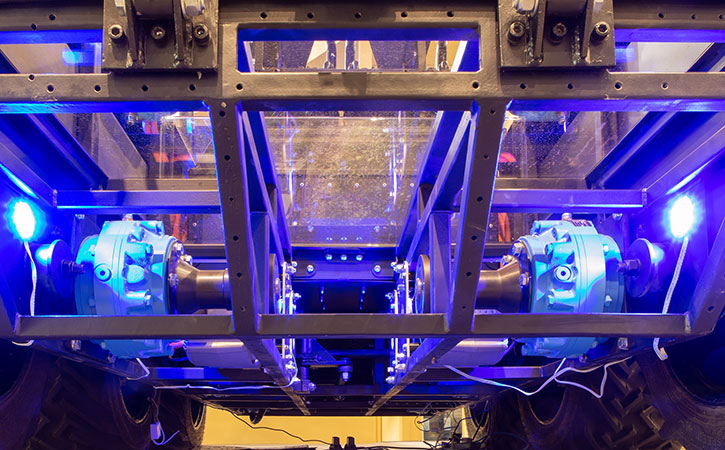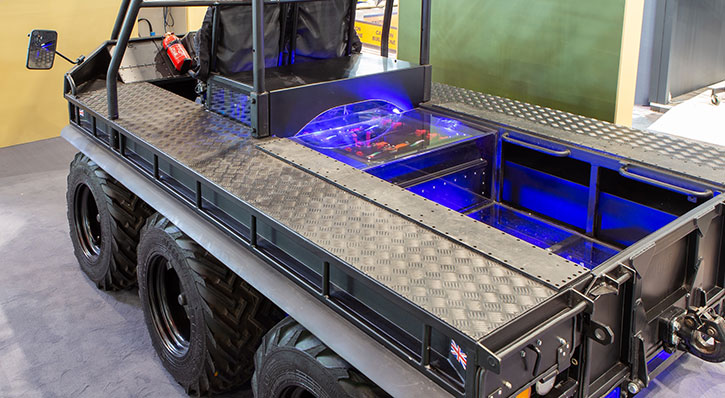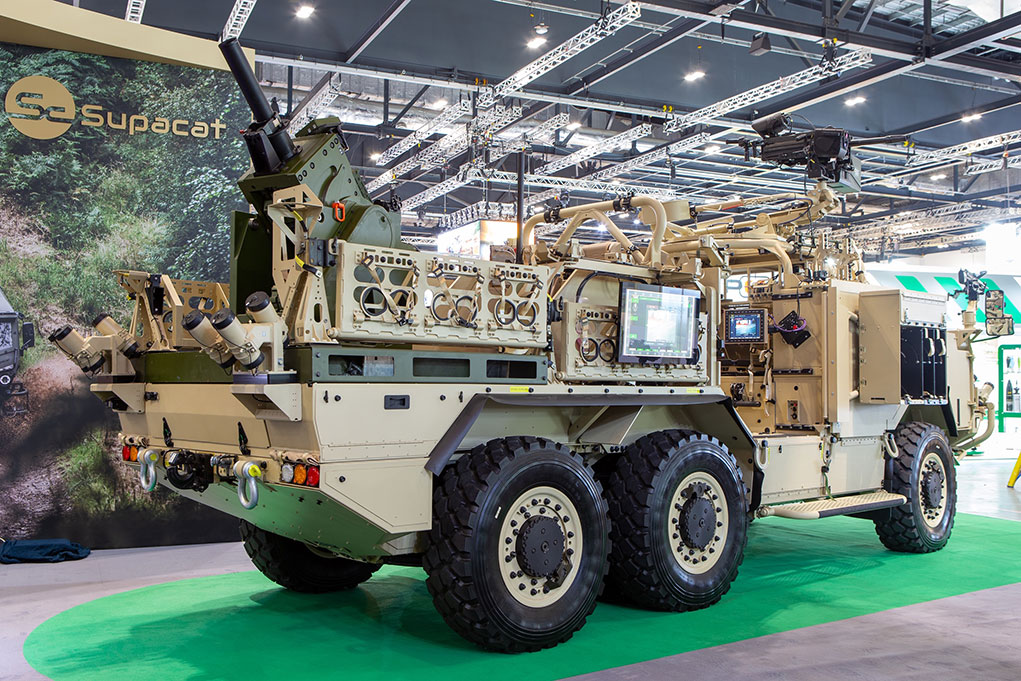Supacat, Rheinmetall Defence and SCISYS have partnered to showcase at DSEI 2019 the ‘High Mobility Integrated Fires Capability’. A mobile fire support capability for light forces, the partnership demonstrates the system on a Supacat’s 6×6 HMT platform mounted with Rheinmetall’s MWS81 mortar system. The target acquisition and integrated fire support platform is networked with SCISYS GVA compliant platform and mission software.
The weapon benefits from the superior off-road performance of the HMT, which allow users to conduct high tempo operations and deliver indirect fire from off-road firing positions. The vehicle on display is Supacat’s HMT Extenda Mk2 Special Forces vehicle, which is made its show debut at the show.
The MWS81 mortar, used here for its first integration on a light vehicle, allows for rapid entry into firing position. The system integrates the Vingmate sight, providing target acquisition, and self-location during day and night, with targets being shared over the battlespace data network enabling Support Weapon effects to be directed precisely onto targets.
The SCISYS developed GVA compliant platform and mission software shares data and video around the platform to each crew member’s display and into the battlespace networks, enhancing shared situational awareness and speed of decision making. The displays are supplied by Leonardo. “This enhanced capability is a first for light forces and offers a solution to a number of potential requirements among the green army and Special Forces”, said Phil Applegarth, Head of Supacat.
Hybrid, Optionally Manned Autonomous ATMP
On a different venture, Supacat experiments with an optionally manned and autonomous hybrid vehicle, designed for extreme off-road mobility. The Technology Demonstrator (TD) addresses logistical requirements of dismounted forces, deployed in remote areas where vehicles are required to move in rough terrain and unpredictable routes. The Technology Demonstrator uses the Supacat All Terrain Mobility Platform (ATMP), as its base vehicle. The hybrid vehicle retains the ATMP payload carrying capacity of up to 1,600g.
The company plans to demonstrate the new vehicle’s performance at its Devon facility over the next six months and is actively seeking new mission challenges that will benchmark its performance and level of autonomy in conducting realistic tasks.
Supacat developed the TD in collaboration with the University of Exeter as part of an Innovate UK-supported Knowledge Transfer Partnership (KTP). “We have focussed our efforts on designing open system architectures, allowing extensive use of commercial off the shelf (COTS) components, which we see as key to a successful and sustainable military solution in a rapidly evolving technology sector”, explains Steve Austen, Engineering Director of Supacat parent, SC Group. “Our approach uses a common electric drivetrain, each of which can be customized through different powering options depending on the mission, range, payload, and operating environment.
“We are exploring, developing and incorporating autonomous technologies in a way that will permit the level of collaboration and control from human to vehicle or from vehicle to vehicle to be altered depending on the complexity of the work being undertaken. “Few autonomous vehicle projects focus on highly technical off-road terrain. The challenge here is to manage and reduce the volume of data needed about the unpredictable non-linear environment around the vehicle to assure effective, safe and predictable performance without having to import and export masses of data from it”, Austen noted.
The ‘optionally manned’ demonstrator utilizes a terrain detection and response system for enhanced mobility and optimized endurance, an object categorization, and response system for obstacle clearance or avoidance during technical off-road driving, which can be tailored to the capabilities of the vehicle, driver or a remote operator, and a path planning and motion behavior system using simultaneous localization and mapping (SLAM) for the navigation of lead and follow on vehicles. Use of Machine Learning, supported by Neural Networks will continue to allow the system to develop and be adapted to different off-road vehicles and applications.






















